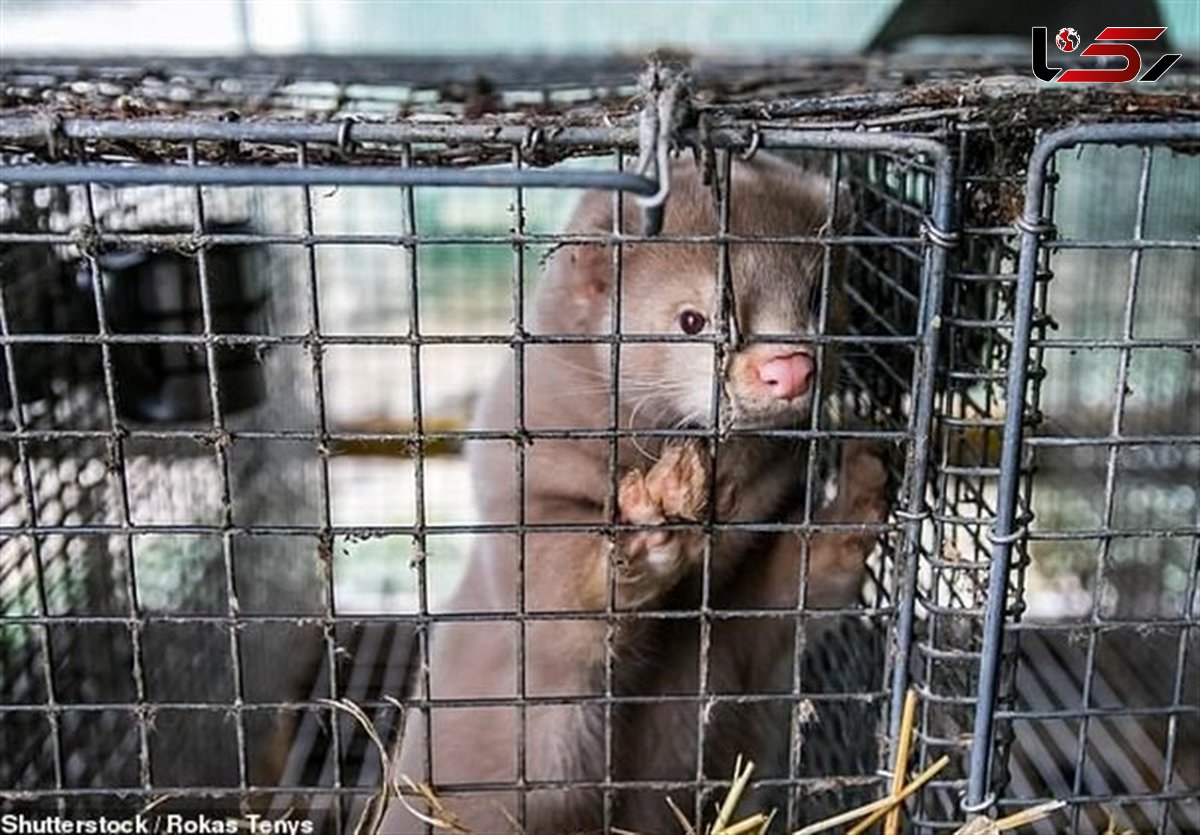Coronavirus Mutations in Mink Could Produce More Deadly Version of COVID-19
Rokna:The transmission of COVID-19 among mink populations could lead to the virus rapidly mutating before jumping into humans, an EU health agency warned.

Such mutations come with the risk that the virus may become more infectious, more deadly, alter the risk of reinfection or scupper prospective vaccines in the works.
The European Center for Disease Prevention and Control (ECDC) has issued new guidance to curb the spread of the coronavirus between minks and humans.
The number of infections that can occur on a fur farm means that 'the virus can accumulate mutations more quickly in minks' the ECDC explained.
In Denmark, 214 people have been identified as having contracted SARS-CoV-2 variants associated with farmed minks — 12 of which featured a unique variant.
This variant — dubbed 'Cluster 5' — is believed to have a moderately decreased sensitivity to neutralizing antibodies in both mink and humans.
At least 216 Danish fur farms are believed to have been infected with coronavirus — and the country plans to cull all 15 million-odd animals in its 1,139 farms.
Meanwhile, the world's largest fur auction house — the farmer-owned Kopenhagen Fur — announced today that it will close its doors within the next two–three years.
As the coronavirus replicates, it evolves, but — to date — none of its identified mutations appear to have changed the transmissibility or deadliness of COVID-19.
However, the ECDC warned, 'the establishment of a virus reservoir among minks may give rise to problematic virus variants in the future.'
'There is currently high uncertainty and further investigations are required regarding the nature of these mutations and their implications for issues such as vaccine effectiveness, reinfections and (the) spread or severity of the virus,' they added.
The ECDC has recommended that countries adopt a number of protective measures at mink farms, including regularly testing workers and local residents and — should any contract COVID-19 — sequencing the virus to check for mutations.
The health agency has also called for animals to be tested on a routine basis, as well as for the introduction of additional cautionary measures to limit the potential spread of the virus from minks to humans.
These could include the culling of mink and the destruction of pelts from infected farms, as well as heighted precautions among veterinarians, mink producers and their partners in the fur industry.
The ECDC report noted that the risk to the general population from mink-related strains of coronavirus was likely low, but much higher for those working with mink and the medically-vulnerable living in areas with a high concentration of fur farms.
However, the World Health Organisation is 'a long, long way from making any determination' as to whether mutated strains of COVID-19 from mink might threaten people, the group's emergencies chief Michael Ryan said last week.
According to David Heymann — a global heath expert from the Chatham House think tank — it is unlikely that a mutant strain of coronavirus from am mink farm will change the course of the pandemic.
'This virus is in every country and it's mutating differently in every country,' the former World Health Organisation official added.
'In order for this virus from the minks to be able to replace (the) virus in other countries and impact on vaccines, it would have to be more fit than the other viruses that are around now and spread easier (and) more rapidly.'
'The ECDC report points at fur farms as potential virus factories capable of churning out mutations of COVID-19 and even undermining medical progress towards reliable treatments,' said Humane Society International/Europe director Joanna Swabe.
'The report further validates the decision by the Danish government to respond to the public health risk that is presented by the fur trade.'
It, she added, should also be ' a serious wake-up call for mink farming countries not yet systematically testing mink to take urgent action.'
Tasnim

Send Comments